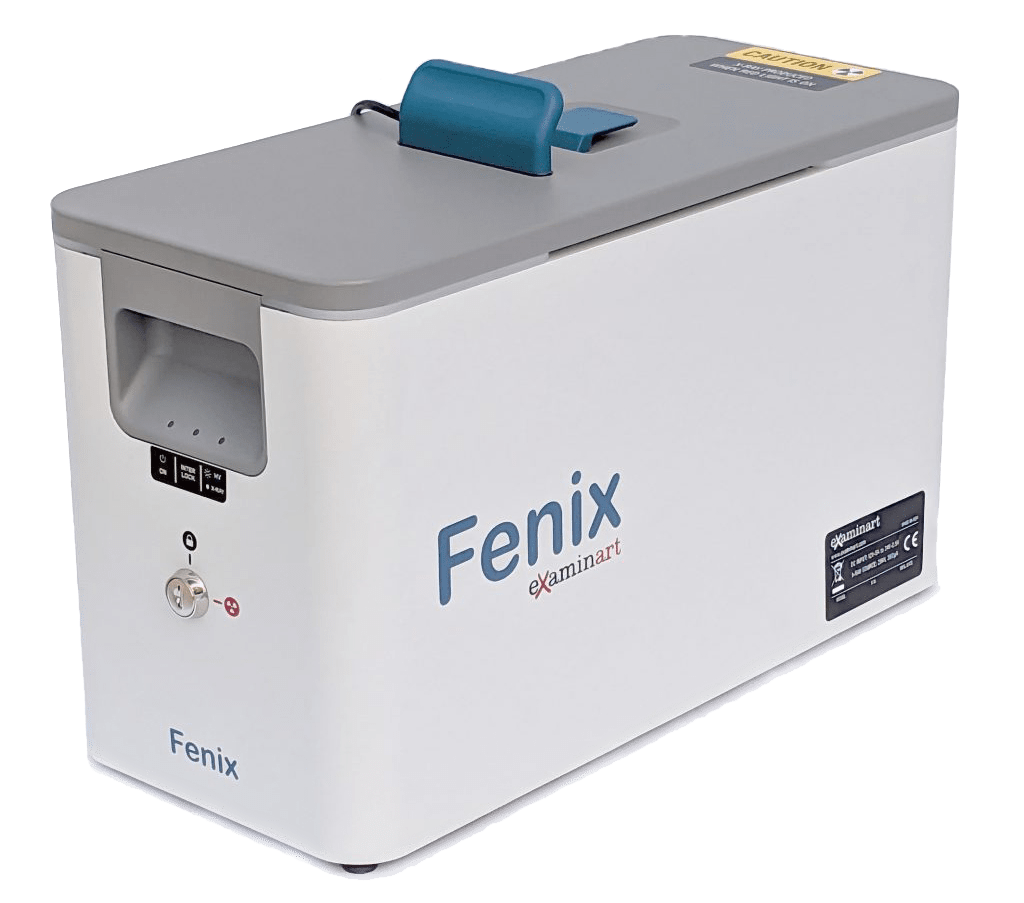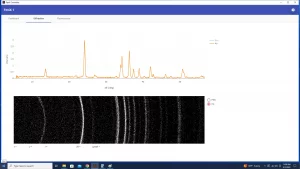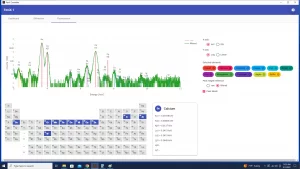The new generation of miniature benchtop XRD and XRF analyzer
The Fenix, designed in California by eXaminart and manufactured in France, is a NextGen miniature benchtop X-ray diffraction (XRD) and X-ray fluorescence (XRF) instrument for fast and easy characterization of powdered samples.
The Fenix technology traces its lineage to the XRD/XRF instrument deployed on Mars in the NASA Curiosity rover. It brings unprecedented miniaturization and ruggedness to the analytical instrument market.
For routine analyses, Fenix offers unique advantages over conventional XRD instruments: small footprint for benchtop use, transportability, low power, user friendliness.
Fenix is equally at home in a conventional laboratory, in a mobile laboratory, or in the field. Power is provided by a laptop style AC adapter or an optional Lithium power station when AC is not available.
A PC (windows or Linux) connected via USB provides all controls with a new intuitive application.
The advantages of XRD analysis using a vibrating blade
1. Improved data quality: Using a vibrating blade can help minimize the effects of orientation preference of crystals in the sample. This means that grains of different sizes and orientations contribute more uniformly to the diffraction pattern, which can lead to results that are more representative of the sample as a whole.
2. Reduction of measurement errors: Vibrations can also be used to distribute sample particles more evenly across the measurement surface, thereby reducing errors due to particle agglomeration or segregation.
3. Adaptability to heterogeneous samples: For samples that cannot be prepared with a uniform particle size, such as in the case of samples analyzed by the Curiosity rover on Mars, a vibration system can be particularly advantageous for obtaining reliable diffraction data .
4. Miniaturization and robustness: Although not a direct advantage of the vibrating blade itself, Examinart’s Fenix, which uses this technology, is a miniature laboratory instrument offering unprecedented miniaturization and robustness for the analytical instruments market. This implies that vibrating blade technology can be integrated into compact and durable systems, which is beneficial for applications in the field or harsh environments.
KEY FEATURES
SPACE HERITAGE
Fenix uses technology deployed on Mars in the NASA Curiosity rover and showcases improvements developed for future space flight missions.
MINIATURIZATION
Measuring 44 cm deep x 19 cm wide, and only 13 kg, Fenix is the smallest benchtop XRD instrument on the market.
X-RAY SOURCE
A robust ceramic/metal X-ray tube is powered by an internal HVPS and new proprietary control electronics.
X-RAY DETECTION
A state-of-the-art sealed vacuum X-ray CCD detector improves speed and energy resolution while reducing power.
SAMPLE HANDLING
Fenix can be provided with a sample spinner or a sample vibrator demonstrated for over a decade on Mars and on Earth.
USER FRIENDLY
Fenix is very simple to use thanks to its easy sample preparation and loading, and its minimalist hardware interface.
INTUITIVE SOFTWARE
Fenix new software offers advanced controls and data processing with an intuitive, dynamic and user-friendly graphic interface.
LOW POWER
Requiring a mere 45W in operation, Fenix can run all day using the optional battery power station.
Fenix : New Miniature benchtop XRD and XRF analyzer (pdf)
| Fenix specifications | |
| X-ray sensor | photon-counting deep-depleted CCD, 1024 x 256, 26 μm pixel, -45 ºC (Peltier), sealed vacuum, forced air cooling. |
| X-ray tube | ceramic-metal construction, grounded cathode, 30 kV nominal (adjustable), 10 W max (adjustable), air cooled. Target material: Co (Cu upon request). |
| X-ray filter | Kβ filter default. |
| XRD range and resolution | 5 to 55 º2θ, 0.25 – 0.3 º2θ FWHM (1) |
| XRF range and resolution | 3 to 20 keV, <200 eV FWHM at 5.7 keV |
| Typical analysis time | 5 to 30 min (2) |
| Ambient Temperature | 0 to 30 ºC |
| Power input | 45 W, 12-24 Vdc from AC adapter or optional Li batteries. |
| Size and mass | 44 (L) x 19 (W) x 29 (H) cm, 13 kg |
| System requirement | laptop or desktop PC with Windows 10-11 or Linux |
| PC interface | USB 2.0 or 3.0 |
| Control software | proprietary software with GUI for control, data viewing and automated preliminary interpretation. |
| Data interpretation software | PC-based 3rd party software options offered. eXaminart’s web-app QAnalyze.com available at no cost. |
| File format export | txt, csv, xy, plv, mdi, …and any ASCII format requested. |
| Transportation | ground and air shipping in rugged transport case provided, checked airline luggage compatible. |
(1) varies with 2θ. Practical FWHM varies with sample nature, grain size, etc.
(2) most simple compositions can be identified in a few minutes. Data is shown in real time, acquisitions can be stopped when sufficient S/N is observed.





